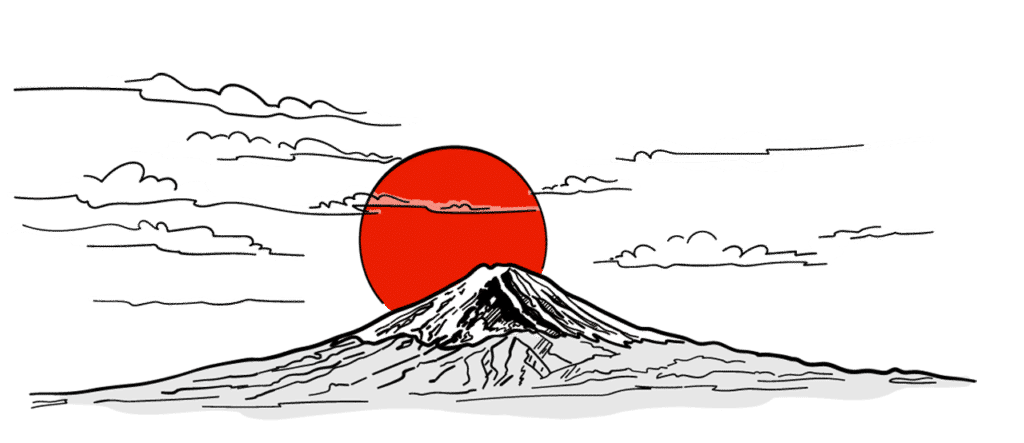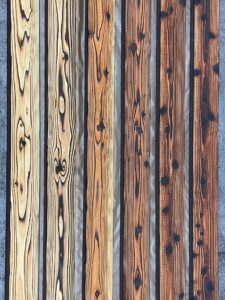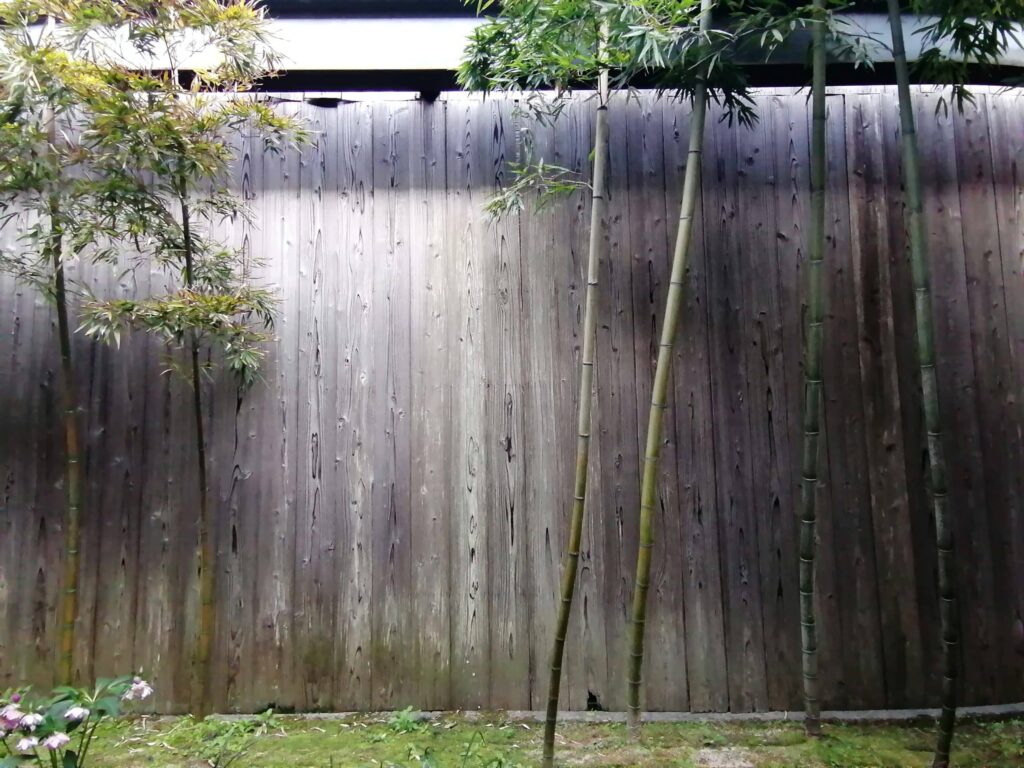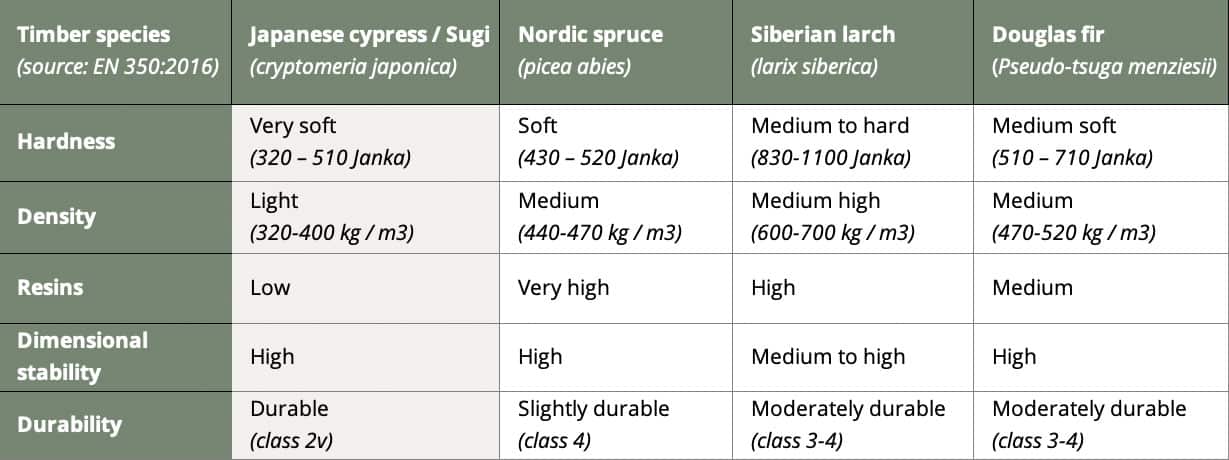What is Yakisugi (Shou Sugi Ban)?

Yakisugi / Shou Sugi ban - An original from Japan
Yakisugi, also known as Shou Sugi Ban, is a time-honoured way of preserving wood that generations have passed down for centuries. This traditional process, specifically for Japanese cypress wood, involves deliberately charring its surface to elicit beautiful and ultra-durable wood panelling solutions; usable indoors and out and with great contemporary appeal.
Table of Contents
Let’s now delve a little deeper into the tradition, already hundreds of years old and originating from Japan. Despite its long history, the artistic technique of Yakisugi / Shou Sugi Ban remained largely unknown to the West until the contemporary buildings created by architect Terunobu Fujimori, where it often featured in facades.
And it wasn’t until a decade or so ago that America really embraced Yakisugi, followed by Europe a few years down the line. In an era where the environment is top of mind, all-natural, sustainable and authentic Yakisugi is both timeless and at home in the present. And enjoying it means also enjoying the duality it embodies.
Sugi – the wood variety used
While the “Yaki” prefix of Yakisugi literally means “burnt”, “Sugi”, conversely refers to the Japanese cypress tree (botanical name Cryptomeria japonica). Hear the term once and you already get a sense of the exclusivity of the wood variety in question. Somewhere down the line, however, a translation error led to the term “Shou Sugi Ban” gaining ground in the English-speaking world as a synonym used alongside Yakisugi. For the record, it is not technically accurate, nor would it be understood in Japan. Even so, the second word, “Sugi”, remains prominent, exemplifying the importance of denoting this particular species of wood.
Despite the native and naturally-growing wood that abounds in Japan – spruce or larch for example – reflecting its status as one of the most densely forested industrialised nations, Yakisugi, by definition, can only be made from the Japanese cypress tree and for good reason. It outperforms other varieties in several ways.
Exceptionally light and soft, another stand-out is its structural stability. The low bulk density these features allow is what paves the way for optimal surface charring and the resulting stable soot layer remains in place to help the wood withstand the firing treatment. It’s resin-free, epitomises natural durability and grows ramrod straight. And if all that weren’t enough, the unrivalled beauty of its natural grain is surely enough to end the argument.
So here’s the thing. If you (like many others) have your heart set on authentic original Yakisugi / Shou Sugi Ban from Japan, it has to be made from the Japanese cypress only. No other wood will do.

Yakisugi production
The ties between the Nakamoto family and their forestry business date back over a century, with Yakisugi produced on a large scale for over six decades and counting. We adopt a bigger-picture approach when producing Yakisugi, using techniques bequeathed over generations and sourcing much of the wood from their own forest stands, which cover over 2,000 hectares.
But even before that, it’s worth reiterating the crucial need to select the “right” wood type. In line with tradition, the profiled boards are air- and sun-dried for several weeks before being fired, which is far kinder to the wood than technical kiln drying.
No manufacturer will reveal all the secrets of the charring process, but suffice to say the boards are carefully burned in a controlled manner at 600-800 °C for a few minutes from the “left” side, facing away from the wood core, to render them durable throughout. For an end product that will stand the test of time, charring like this is a non-negotiable must.
Using a Bunsen burner to flame the surface more superficially may create a visually similar outcome, but the heat will never treat the board throughout.
Yakisugi advantages and properties
So what makes Yakisugi so compelling? In short, it’s how the unique firing process reconfigures the cellular structure within the boards. Cells narrow and partially close in response to the heat, reducing the level of water absorption and the scope for swelling and shrinkage in the process. This minimises the risk of cracking over time, underlining Yakisugi’s credentials as the durable wood of choice for long-lasting applications. The firing process even makes it more rot-resistant to boot. The charring process carbonises the wood surface, creates a soot layer that repels UV radiation and eliminates any food source for wood pests like insects and moulds.
Ultimately, wood is the only all-natural and renewable building material. And however counter-intuitive it may seem, charring it gives it natural protection and decades of protection going forward. The head-turning visuals more and more people are discovering are the icing on the cake.
Three things you should know when you buy Yakisugi
When it comes to producing Yakisugi, we pride ourselves on the decades of experience, insights and knowledge gained to date. But we are equally aware of the need to preserve and sustain what is an invaluable and irreplaceable technique. From our position in the know, we would like to contribute our expertise to all interested parties and help them form an informed opinion about genuine, authentic Yakisugi, its features and how it comes into being. Do you want to know how to distinguish the original from faux Shou Sugi Ban? Then have a look into our blog article.

1. Each board is unique
Like other all-natural products, each Yakisugi board is unique and therein lies one of the keys to its immense visual appeal: a grain and colour that vary from one board to the next.
For customers who prefer as uniform a colour as possible, however, a range of pigmentations within the eco-friendly coating solutions we offer will tick the right box.

2. Weathering process is normal
Moreover, like any other wood, Yakisugi will weather over the decades due to weather exposure. What this means, for example, is that weathering will eventually wear away the bonded soot layer of Suyaki and turn Gendai and Pika-Pika varieties, like any other woods, increasingly grey.
Note, however, that this happens much later and slower compared to untreated wood.

3. Many JapAnese love the patterning
Moreover, any changes that ensue are primarily cosmetic, will not shorten the structural lifespan and can be mitigated with regular refinishing.
Incidentally, Japanese customers tend to avoid re-treating Yakisugi facades once installed, since the weather-related patterning that occurs over time is thought to have its own charm.

 EU (English)
EU (English) DE (Deutsch)
DE (Deutsch) FR (Français)
FR (Français) UK (English)
UK (English) US Website
US Website



